Experimental Investigation on Dynamic Behavior of Porous Material Sandwich Plates for Lightweight Ship
2019-07-08ZHULingGUOKailingLIYinggangZIHuan
ZHU Ling,GUO Kai-ling,LI Ying-gang,ZI Huan
(1.Key Laboratory of High Performance Ship Technology(Wuhan University of Technology),Ministry of Education,Wuhan 430063,China;2.Departments of Naval Architecture,Ocean and Structural Engineering,School of Transportation,Wuhan University of Technology,Wuhan 430063,China;3.Collaborative Innovation Centre for Advanced Ship and Deep-Sea Exploration(CISSE),Wuhan 430063,China)
Abstract:Due to the excellent mechanical performance,the porous material sandwich structures have potential applications in the design of protective devices,which can improve the impact resistance of ship structures.In this paper,the dynamic behaviors of porous material sandwich plates under impact loadings were investigated experimentally by INSTRON 9350 Drop Tower,and the impact resistance of Aluminum Foam Sandwich Plate(AFSP)and Balsa Wood Sandwich Plate(BWSP)was analyzed and compared.The results show that when suffering from impact loadings,the peak impact force of AFSP was larger than that of BWSP.On the contrary,the permanent deflection of AFSP was smaller than that of BWSP.Meanwhile,no delamination was observed for AFSP,while the delamination between the face sheet and the core was obvious for BWPS.In addition,the plastic energy absorption ratio of AFSP was larger than that of BWSP,indicating the impact resistance of AFSP is better than that of BWSP.This paper can provide technical supports for the anti-impact design of ship structures.
Key words:porous material sandwich structure;impact test;dynamic behavior;energy absorption
0 Introduction
When ships navigate in the rough sea,they could suffer complex loadings,such as impacts from wave,collision with other ships and bridges,resulting in serious accidents,which can lead to loss of people's life and properties.Thus,to improve the impact resistance of ship structures is very important for the safety and reliability of ships and other marine structures.The conventional method to improve the structural safety of ship is to increase the thickness,but it may result in the growth of the energy consumption of ships,and the decline of the loading capacity.Contributing to the lightweight and excellent mechanical properties in energy absorption,the applications of sandwich structures with lightweight material cores in anti-impact for engineering structures design are increasing rapidly[1-4].
Nowadays,many researchers have investigated the mechanical properties of sandwich structures with balsa wood core and aluminum foam core respectively[5-14].The compression tests loading in three different directions,i.e.transverse,longitudinal,radial,were conducted to analyze the differences of the mechanical properties of balsa wood under different impact loading states[6].What is more,three point bending tests were performed to examine the failure patterns of balsa wood sandwich beam and then the collapse loading was discussed[7].Besides,the dynamic responses of balsa wood sandwich plates and PVC foam sandwich plates suffering from impact loadings were compared and discussed based on the results of impact tests[8].The dynamic behavior of sandwich plates with balsa wood core and cork core subjected to mass impacts with medium velocity was investigated,the contact force,energy absorption,indentation depth and global deformation were compared[9].On the other hand,there are also some studies on the mechanical performances of aluminum foam as well as its sandwich structures.The quasi-static and penetration behavior of aluminum foam sandwich structures was experimentally studied,the effects of impact velocity,face sheet thickness and density of aluminum foam on the anti-penetration capacity were discussed[10].In addition,the repeated impact tests were conducted on sandwich plates with aluminum foam core,and the relationship between the dynamic responses and the impact number was examined[12].Moreover,the effects of low temperature on dynamic behavior of aluminum foam sandwich plates under single and repeated impacts were experimentally studied[13-14].
BWSP and AFSP both have excellent impact resistance,but there are some differences in their physical and mechanical properties.As for physical properties,the density of balsa wood is much lighter than that of aluminum foam,thus balsa wood is better in lightweight design.On the other hand,balsa wood is the kind of material absorbing water easily,while aluminum foam is waterproof,thus when accident happens,the BWSP may absorb amount of water and increase the weight of the ship,which can accelerate the sinking of the ship and make the situation worse.As for mechanical properties,though there were already many studies on BWSP and AFSP respectively,the differences between the impact resistance of them were rarely investigated.The applications of sandwich structures with porous materials core in structural design of ship are affected by the impact resistance of the structures significantly,so it is very important and essential to discuss the differences in impact resistance between AFSP and BWSP,and to reveal the mechanics mechanism causing the differences.
In this paper,the impact tests on AFSP and BWSP were performed by INSTRON 9350 Drop Tower,and the time histories of impact force,displacement,velocity and absorbed energy,as well as the force-displacement curves were obtained and analyzed.Moreover,the deformation and failure modes,the energy absorption capacity of AFSP and BWSP were compared and discussed.Finally,the impact resistance of BWSP and AFSP was compared comprehensively and some suggestions were proposed for the applications of porous material sandwich structures on the structural design of ship and other marine structures.
1 Impact tests on sandwich plates
1.1 Experiment apparatus and method
The impact tests were conducted by using INSTRON 9350 Drop Tower as shown in Fig.1.The total impact mass including impact nose,force transducer and additional mass is 31.459 kg and the maximum velocity can be up to 24 m/s.The impactor with a 25 mm diameter hemispherical nose was connected to a force transducer with a maximum loadcarrying capacity of 90 kN.During the impact tests,all the data were collected from the force transducer by a data acquisition system(DAS 64K).Thus,the time histories of velocity,displacement,absorbed energy were converted from the time history of impact force by Eqs.(1)-(3).Before the impact test,the sample was clamped in the middle of the clamp with bolts to provide fixed boundary,and the inner dimension of the clamp apparatus was 180 mm×180 mm.
In order to determine the dynamic behavior of BWSP and AFSP subjected to impact loadings and examine the effects of impact energy,a series of impact energy from 100 J to 300 J were selected,as shown in Tab.1.

Fig.1 INSTRON 9350 drop tower


Tab.1 Impact tests condition
1.2 Test samples and material properties
The samples of AFSP and BWSP(shown in Fig.2)were composed of front face sheet,back face sheet and foam core.The face sheets were bonded to the foam core with epoxy resin ad-hesive being heated under about 60℃.The overall dimensions of the sandwich plate were 250 mm×250 mm with thickness of 22.5 mm.The thicknesses of the face sheets and foam core were 1.25 mm and 20 mm,respectively.

Fig.2 Test specimens
The material properties of aluminum foam and balsa wood were obtained by conducting quasi-static compression tests,using the Universal Testing Machine.The material properties are summarized in Tab.2,and the stress-strain curves of aluminum foam and balsa wood are illustrated in Fig.3.

Tab.2 Mechanical properties of porous materials

Fig.3 Stress-strain curves of porous materials
Though aluminum foam and balsa wood are both lightweight porous materials,the matrix materials of them are quite different,i.e.the matrix material of aluminum foam is metal,while that of balsa wood is fiber.It can be found from Fig.3,the plateau stress of aluminum foam and balsa wood is approximately equal.However,behind the yield point,the tendencies of the stress versus strain for them are reversed.In the plateau stage,as the strain increased the plateau stress of aluminum foam increased slightly,while the plateau stress of balsa wood decreased.The reason for this phenomenon is the difference in the microstructure.Aluminum foam can be regarded as isotropic material,during compressing process,the wall of core collapses gradually,thus the plateau stress increases.On the contrary,balsa wood is anisotropic material,the fiber of which is very easy to delaminate when suffering from shear force,and then be separated from the sample,resulting in the fiber closed to the boundary cannot resistance the compression force anymore.Besides,in the plateau stage,the oscillation of stress of aluminum foam is larger than that of balsa wood,because the unit size of balsa wood is much smaller than that of aluminum foam,resulting in the stress variation of balsa wood is smoother than that of aluminum foam.As is known the densification strain is relevant to the unit size of porous material.By comparison,it can be found that the densification strain of balsa wood is larger than that of aluminum foam,indicating the porosity of balsa wood is larger than that of aluminum foam.
1.3 Experimental results
The deformation profiles of AFSP and BWSP suffering from impacts with different impact energy are presented in Fig.4 and Fig.5.It can be found that the deformation patterns of the AFSP and BWSP were almost the same,i.e.the front face experienced local indention,while the global deformation is very small,and there is almost no deformation adjacent to the boundary.Judging from the changes of the white lines,it can be known the deformation area and the deflection of front face increased gradually with the increase of impact energy.By contrast,the back face underwent transverse bending,and the deflection of back face also increased as the impact energy increased.The white lines on the boundary were still straight,indicating that the boundary condition can be approximately regarded as fixed with no displacement and ration.
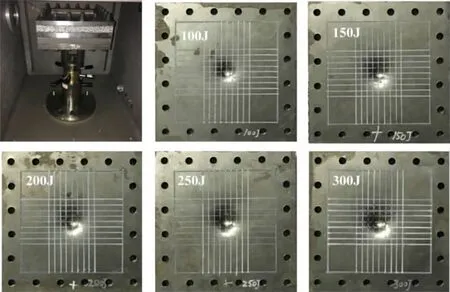
Fig.4 Deformation of AFSP under impact loadings
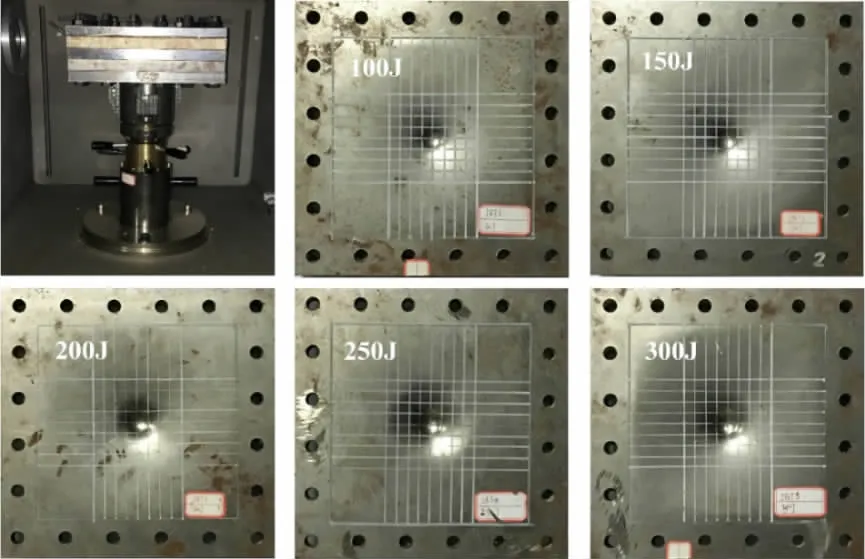
Fig.5 Deformation of BWSP under impact loadings
The process of the impact can be divided into two main stages,i.e.loading stage and unloading stage.In the loading stage,as the time increased,the impact force and the deflections of face sheets increased gradually,while the impact velocity declined moderately until the deflections of the sandwich plate reached the maximum value.In the unloading stage,the elastic deformation started to recover,resulting in the energy absorbed by sandwich plate descended,the impact force dropped gradually,while the impact velocity grew from zero in reverse direction until the impactor separated from the front face sheet.
The time histories of dynamic responses of AFSP and BWSP under different impact energy are illustrated in Fig.6 and Fig.7.The tendencies of time histories of impact force,displacement,impact velocity and absorbed energy were very similar for AFSP and BWSP.Under different impact energy,the duration time of impact is almost the same,while the peak impact force increased with the increase of impact energy.As the impact time increased,the deflection of front face increased steadily.When the value of deflection arrived the maximum,the impactor began to rebound,and then the deflection of front face declined gradually to be constant after the separation of the impactor from the front face.At the beginning of the impact,the impact velocity decreased steadily to be zero at the moment the deformation of front face arrived to its largest value;afterwards,owning to the rebound of the impactor the impact velocity increased in reverse direction until the separation of the impactor from the front face.During the impact,the deformation energy is mainly composed of two parts,including elastic energy and plastic energy.The elastic energy can be released in the end of the impact,while the plastic energy will be transformed into permanent plastic deformation which cannot be released.The energy absorbed by sandwich plates increased with the increase of the impact time.When the deformation is the largest,the energy absorption is the largest,and then the elastic energy began to be released,resulting in the energy absorbed by sandwich plates declined to be constant values once the impactor separated from the front faces.

Fig.6 Time histories of dynamic responses of AFSP
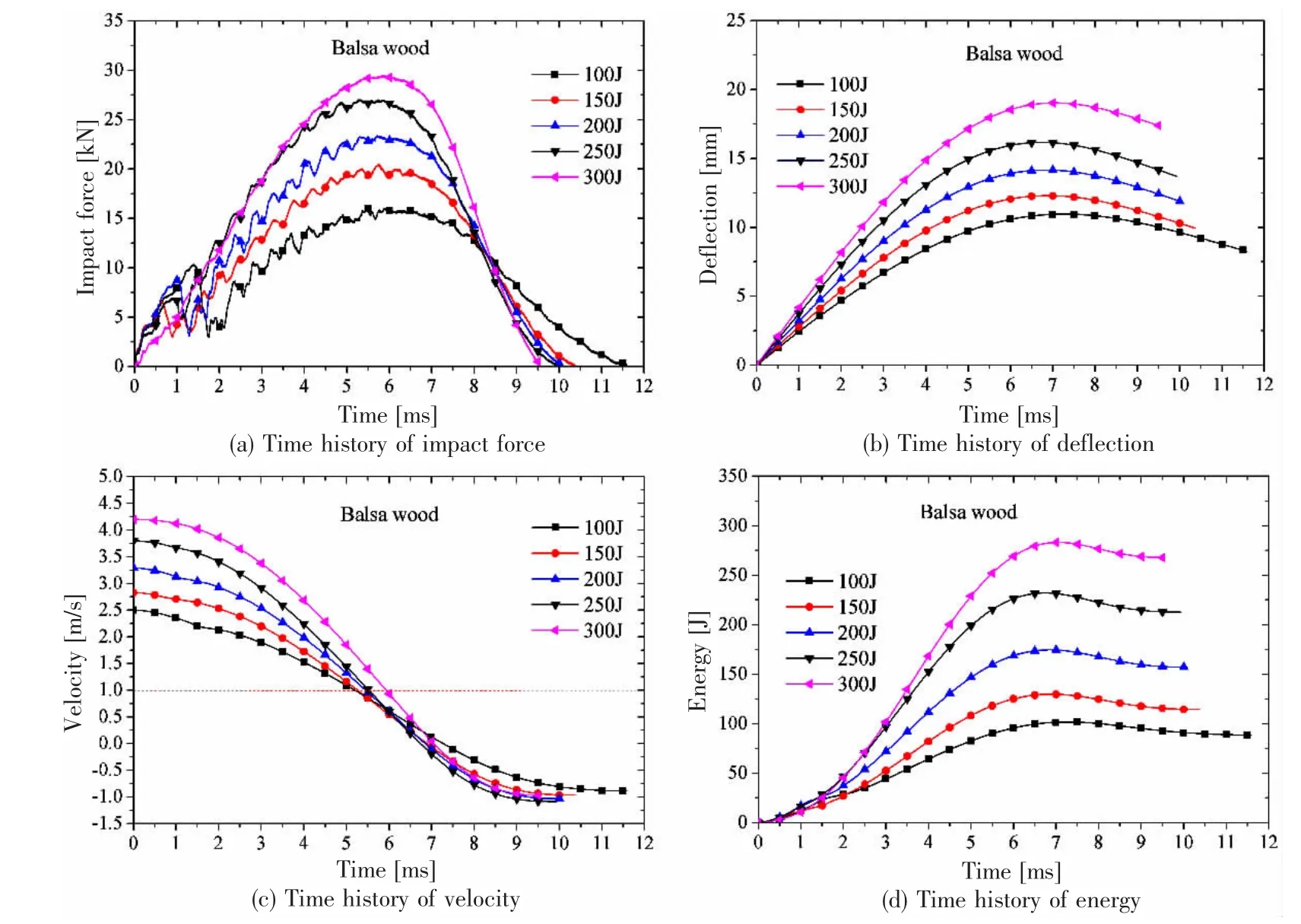
Fig.7 Time histories of dynamic responses of BWSP

Fig.8 Force-displacement curve of porous materials sandwich structures
The force-displacement curves of sandwich plates under different impact energy are presented in Fig.8.As the displacement increased,the impact force increased,and the loading stiffness almost kept the same.When the value of impact force reached maximum,the impactor began to rebound from the front face,and the unloading stage occurred.In the unloading stage,the slopes of force-displacement curves changed to be negative,and no change occurred in the unloading stiffness.Under different impact energy,the values of loading stiffness and unloading stiffness were almost equal to each other respectively,resulting from the paths of loading and unloading under different impact energy were almost the same.
Under impact loadings,there was no delamination between the face sheet of AFSP and the core layer,but the phenomenon of delamination occurred in BWSP.The front face sheet and the stiffness of balsa wood does not match,when suffering from impact loadings,the front face sheet appeared large local deformation,and then balsa wood was separated from the face sheet as shown in Fig.9.The initial specimen of BWSP is presented in Fig.9(a),the epoxy resin was used as adhesive.Under impact with low energy,there was no delamination between the front face and the core layer as shown in Fig.9(b),contributing to the deformation was very small.However,as the impact energy became larger,the phenomenon of delamination happened in some local area as displayed in Fig.9(c),and when the impact energy was large enough the front face would be separated from the core entirely as illustrated in Fig.9(d).Thus,compared with BWSP,AFSP is priority to BWSP in structural integrity when subjected to identical impact loadings.

Fig.9 Delamination of BWSP
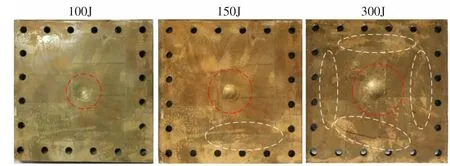
Fig.10 Failure model of BWSP
Different from aluminum foam,balsa wood is an isotropic material,along the direction of the fiber it can undertake large tension and compression stress.However,in the direction vertical to the fibers,the loading capacity is much weaker,the fibers are very easy to delaminate from each other.Under impact loading,the balsa wood core is more easy to occur fracture,which will also consume energy.The damage modes of BWSP are shown in Fig.10.It can be seen that when the impact energy was 100 J,the impact zone appeared local indentation and fracture.When the impact energy was 150 J,except the impact zone occurred indentation and fraction,the area adjacent to the boundary would also appear fracture.When the impact energy increased to 300 J,the fracture moved towards the areas far from impact zone,meanwhile the fracture began to occur closed to the boundary.
2 Effect of impact energy on impact resistance of sandwich plates
2.1 Comparison in time histories of dynamic responses
To compare the impact resistance of AFSP and BWSP,it is necessary to analyze the relationship between the dynamic responses with the impact energy.Firstly,the dynamic responses of AFSP and BWSP under impact energy of 200 J were compared,as the represent of medium energy impact.As shown in Fig.11(a),the peak impact force of AFSP was larger than that of BWSP,while the impact time duration was shorter than that of BWSP.It can be seen from Fig.11(b),the tendencies of time history of front face deflection were almost the same for AFSP and BWSP,while the maximum deflection and permanent deflection of AFSP were smaller than those of BWSP.The trends of time history of impact velocity of AFSP were similar to that of BWSP,while the rebound velocity of AFSP was smaller than that of BWSP,as illustrated in Fig.11(c).The energy absorption ratio of AFSP was larger than that of BWSP.
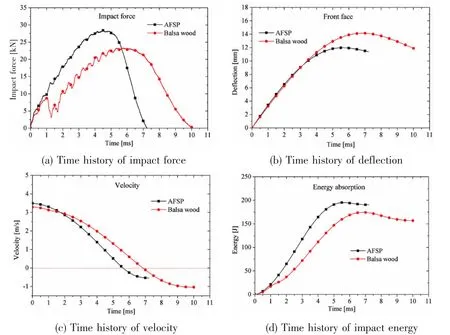
Fig.11 Comparison of dynamic responses of porous materials sandwich structures
The force-displacement curves of AFSP and BWSP are illustrated in Fig.12.It can be known,the loading stiffness and unloading stiffness of AFSP were both larger than those of BWSP.When subjected to impact loadings,aluminum foam would not appear brittle fracture,but for BWSP the balsa wood core fractured which cannot store elastic deformation energy anymore,resulting in only the face sheets can store elastic deformation energy.Thus,the unloading stiffness of AFSP was much larger than that of BWSP.Besides,it also can be found that the plastic deformation energy of AFSP was larger than that of BWSP.On the contrary,the elastic energy of AFSP was smaller than that of BWSP.

Fig.12 Comparison of force-displacement curves of porous materials sandwich structures
2.2 Relationship between dynamic responses with impact energy
Aluminum foam and balsa wood are both porous materials,however there are some differences in the mechanical properties,resulting in some differences in the dynamic behaviors,when suffering from impact loadings.

Fig.13 Dynamic responses versus impact energy
The curves of dynamic responses of AFSP and BWSP versus impact energy are presented in Fig.13.The impact force increased with the increase of impact energy,but the increments of them declined.The impact force of AFSP is larger than that of BWSP for various of impact energy.As the impact energy increased,the deflections of front face and back face as well as compression of core layers both increased.Meanwhile,compared with deflection of front face sheet,the deflection of back face sheet was much smaller,indicating that the impact energy ab-sorbed by front face sheet is much larger than that of back face.When the impact energy is 100 J,for AFSP the deflection of front face was almost equal to that of BWSP,and the deflection of back face was smaller than that of BWSP,while the compression of core layers was larger than that of BWSP.When the impact energy is larger than 100 J,as for AFSP the deflections of front face and back face were both smaller than those of BWSP,however the compression of core layers was larger than that of BWSP.As for AFSP,the deflections of front and back face sheets,the compression of foam core increased with the increase of impact energy,while the increments of them declined gradually.However,as for BWSP the relevance between deflections of front and back faces,compression of balsa wood core with impact energy was not obvious.The fibers are easy to separate from each other in the transverse direction under impact loadings,in terms of local fracture as shown in Fig.10.Once the fiber fractured,it cannot undertake any loadings,resulting in the impact energy was absorbed mainly by front and back face sheets.Thus,the deflections of face sheets of BWSP were larger than those of AFSP,and the compressions of aluminum foam core were smaller than those of balsa wood core.
The relationship between the rebound velocity with the impact velocity is illustrated in Fig.14.As the impact velocity increased,the rebound velocity increased,while the increments decreased.However,when the impact energy was 300 J,the rebound velocity declined for BWSP,because when the impact energy was large enough,the balsa wood core fractured adjacent to the impact zone and boundaries,which would absorb larger amount of energy.The initial impact energy was mainly transformed into two parts,including plastic deformation energy and kinetic energy of the impactor in terms of rebound velocity,as illustrated in Eqs.(4)-(5).The energy consumed by friction between the front face and core layers is very small,thus it can be neglected.The curves of energy ratio of AFSP and BWSP versus impact energy are illustrated in Fig.15.As the impact energy increased,the plastic energy ratios of AFSP and BWSP both increased gradually,while the increment of BWSP was larger than that of AFSP.Besides,it can be found that the plastic energy ratio of AFSP was always larger than that of BWSP,indicating that the performance of energy absorption of AFSP is better than that of BWSP.

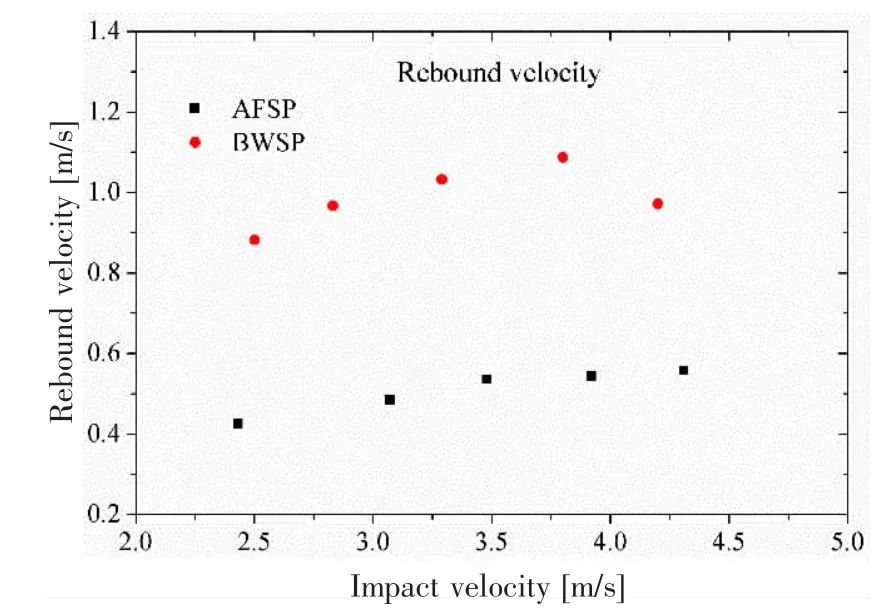
Fig.14 Rebound velocity versus impact velocity
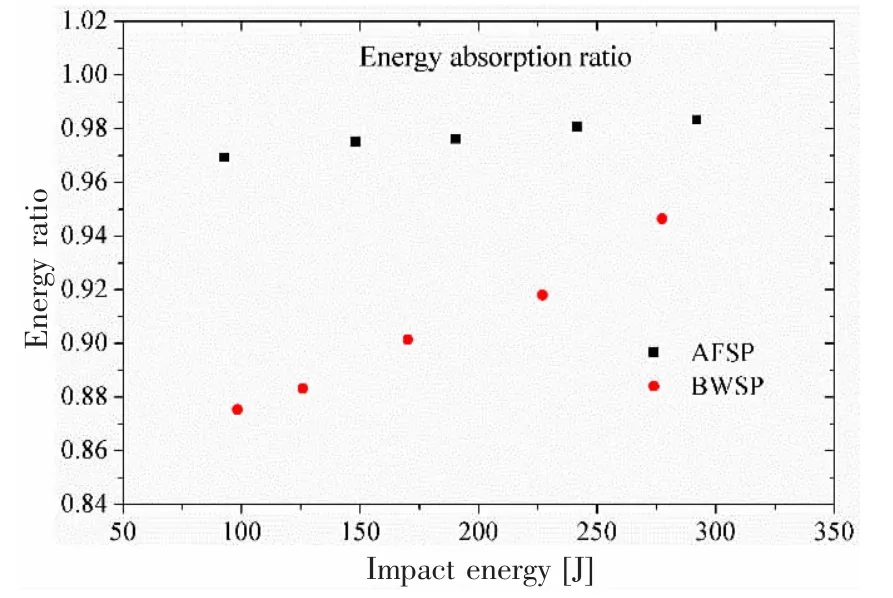
Fig.15 Energy ratio versus impact energy

When suffering from identical impact energy,the deflections of AFSP were smaller than those of BWSP,meanwhile the plastic energy ratio of AFSP was larger than that of BWSP.Thus,it can be said that the impact resistance of AFSP is better than that of BWSP,for the design of ship structures considering the impact loadings,it is priority to choose AFSP.
3 Conclusions
The impact tests under variety of impact energy were performed by using INSTRON 9350 Drop Tower,and the dynamic responses of AFSP and BWSP were obtained and discussed,and then the impact resistance of them was compared and analyzed.The following conclusions can be drawn:
(1)When suffering from impact loadings,the deformation patterns of face sheets of AFSP and BWSP are almost the same,i.e.the front face experiences local indentation,the back face undergoes global bending.However,the deformation patterns of core layers as well as the failure modes of aluminum foam and balsa wood core are quite different.The aluminum foam core was compressed or even crushed,the balsa wood core appeared indention and fracture adjacent to the impact area,meanwhile,the delamination between the fibers occurred.
(2)When subjected to identical impact energy,the peak impact force,loading and unloading stiffness of AFSP are both larger than those of BWSP,indicating that the structural rigidity of AFSP is stronger than that of BWSP.Besides,the deflections of front face and back face of AFSP are smaller than those of BWSP,while the maximum compressions of AFSP are larger than those of BWSP,meaning that aluminum foam can absorb much more energy than balsa wood core.Overall,the impact resistance of AFSP is better than that of BWSP.
(3)The plastic deformation energy as well as the ratio of plastic deformation increase with the impact energy,while the plastic energy ratio of AFSP is larger than that of BWSP,which means the performance of impact energy absorption of AFSP is better than that of BWSP.
Due to the impact resistance of AFSP is better than that of BWSP,it is priority to choose AFSP as the protective structure of the lightweight ships when considering the possibility of impact loadings.
杂志排行
船舶力学的其它文章
- Numerical and Experimental Studies of the Acoustic Scattering from an Externally Ring-Stiffened Cylindrical Shell
- Strength Assessment of Damaged Tubular Bracing Members after Impact in Offshore Structure
- Research on the Design and Parameter Influence Law of A High-Static-Low-Dynamic Stiffness Vibration Isolator Using for Marine Equipment
- A New Scheme for Vortex Sheet Diffusion in Fast Vortex Methods
- LQR Control of a Three Dimensional Underwater Glider
- Research on the Mechanism and Characteristic of Added Resistance of Moonpool with Recess
